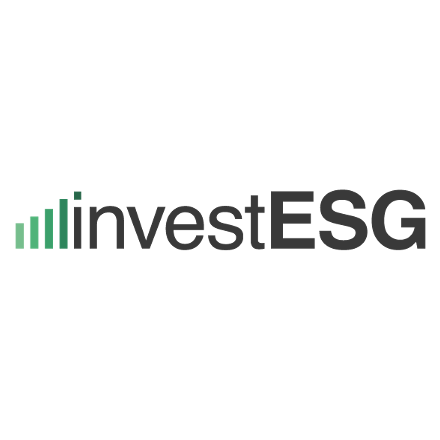The corporate reporting landscape has undergone a seismic shift, moving beyond traditional financial metrics to encompass environmental, social and governance (ESG) factors.


Photo credit: Getty Images / Unsplash+
This transformation reflects a growing recognition of the interconnectedness between business performance and sustainability. Driving this change are new and increasingly stringent reporting standards, notably the International Financial Reporting Standards (IFRS) S1 and S2, and the European Sustainability Reporting Standards (ESRS) under the Corporate Sustainability Reporting Directive (CSRD). These standards are not merely about ticking boxes; they demand comprehensive qualitative and quantitative disclosures, placing unprecedented data collection and management burdens on companies. However, amidst this complexity, artificial intelligence (AI) emerges as a powerful ally, streamlining the process and ushering in a new era of efficient and insightful ESG reporting.
The new reporting paradigm
The IFRS Foundation, through the International Sustainability Standards Board, has introduced IFRS S1 (General Requirements for Disclosure of Sustainability-related Financial Information) and IFRS S2 (Climate-related Disclosures). IFRS S1 sets the overarching framework, requiring companies to disclose material information about sustainability-related risks and opportunities that could reasonably be expected to affect their financial performance. IFRS S2 builds on this foundation, focusing specifically on climate-related risks and opportunities and demanding detailed disclosures on greenhouse gas emissions, transition risks and physical risks.
In parallel, the European Union has enacted the CSRD, which mandates using the ESRS. These standards are broader in scope than IFRS S2, covering a wide range of sustainability topics, including ESG factors. The ESRS emphasise the ‘double materiality’ concept, requiring companies to disclose not only how sustainability issues affect their financial performance (financial materiality) but also how their activities impact society and the environment (impact materiality).
These standards share a common goal: to provide investors and stakeholders with comparable and reliable information about a company's sustainability performance. However, they also introduce significant challenges. Unlike traditional financial reporting, ESG disclosures encompass a wider range of (often qualitative and forward-looking) data points. This necessitates the collection and management of vast amounts of data spanning diverse areas such as carbon emissions, water usage, labour practices and supply chain management.
The data deluge: qualitative and quantitative disclosures
A key feature of the new reporting standards is the requirement for both qualitative and quantitative disclosures. Quantitative data includes metrics such as greenhouse gas emissions (Scope 1, 2 and 3), water consumption, waste generation and employee turnover. Qualitative disclosures, on the other hand, encompass narratives about a company's sustainability strategy, risk management processes and stakeholder engagement.
The sheer volume of data required is staggering. Companies must gather information from various sources, including internal systems, suppliers and external databases. This data must then be aggregated, analysed and presented in a standardised format. The challenge is further compounded by the need for consistency and comparability across different reporting periods and companies.
Moreover, the qualitative aspect of ESG reporting demands a nuanced understanding of complex sustainability issues. Companies must be able to articulate their approach to managing these issues, demonstrating their commitment to responsible business practices. This requires a shift from simply reporting numbers to providing a compelling narrative that connects data points to strategic objectives.
AI to the rescue
The complexities of ESG reporting have created a pressing need for innovative solutions. This is where AI comes into play. AI technologies can automate data collection, analysis and reporting, significantly reducing the burden on companies.
One of the most significant challenges in ESG reporting is data tagging. Traditional tagging systems that rely on manual processes are time-consuming and prone to errors. AI-powered solutions can automate the tagging process by leveraging natural language processing (NLP) and machine learning (ML) algorithms. These algorithms can analyse text and identify relevant data points, automatically assigning appropriate tags.
AI can also help companies identify and extract data from unstructured sources, such as sustainability reports, news articles and social media posts. This capability is particularly valuable for gathering information about suppliers and other stakeholders.
Furthermore, AI can assist in building a coherent narrative around ESG data. By analysing data patterns and trends, AI can identify key insights and generate informative and engaging reports. For example, AI can analyse greenhouse gas emissions data and identify areas where a company can reduce its carbon footprint. It can also analyse social data and identify potential human rights risks in the supply chain.
Key AI capabilities for ESG reporting
· Automated data extraction and tagging – NLP and ML algorithms can extract data from diverse sources and automatically assign relevant tags, eliminating the need for manual tagging
· Data validation and quality control – AI can identify inconsistencies and errors in data, ensuring its accuracy and reliability
· Risk assessment and scenario analysis – ML models can analyse historical data and identify potential ESG risks, enabling companies to develop proactive risk management strategies
· Performance monitoring and benchmarking – AI can track key performance indicators and benchmark a company's performance against industry peers
· Narrative generation and report automation – AI can analyse data patterns and trends, generating insightful reports and narratives that connect data points to strategic objectives
· Automated materiality assessments – AI can analyse large data sets and stakeholder feedback to identify material topics for the company
· Supply chain transparency – AI can be used to track and analyse supplier data to ensure compliance with ESG standards and identify risks within the supply chain.
Simplifying reporting through intelligent data association
Traditional reporting systems often rely on complex data structures and tagging systems, making it difficult to connect data points to specific disclosure requirements. AI simplifies this process by automatically associating data with relevant reporting standards. For instance, AI can analyse a company's greenhouse gas emissions data and automatically link it to the corresponding disclosure requirements in IFRS S2 or the ESRS.
This intelligent data association not only streamlines the reporting process but also enhances the accuracy and consistency of disclosures. By ensuring that data is correctly mapped to reporting standards, AI helps companies avoid errors and ensure compliance.
The future of ESG reporting: AI and sustainability
Integrating AI into ESG reporting is not a passing trend; it is a fundamental shift that will reshape the future of corporate sustainability. As reporting standards become more complex and data requirements increase, AI will become an indispensable tool for companies seeking to navigate the ESG landscape.
The benefits of AI in ESG reporting extend beyond efficiency and accuracy. By providing deeper insights into sustainability performance, AI can help companies identify opportunities for improvement and drive positive change.
Moreover, AI can facilitate greater transparency and accountability. By enabling companies to provide more detailed and reliable disclosures, AI can help build trust with investors and stakeholders.
The combination of stringent reporting standards and powerful AI technologies is driving a new era of sustainability. Companies that embrace this transformation will be well positioned to thrive in a world where ESG factors are increasingly important.
The use of AI within ESG reporting is here to stay. It is not a fad but a necessary tool for companies to manage and report on the increasingly complex world of sustainability data. The ability to collect, analyse and report on qualitative and quantitative data in a timely and accurate manner is crucial for companies to meet the demands of regulators, investors and other stakeholders. AI is the key to unlocking the full potential of ESG reporting and driving meaningful progress towards a more sustainable future.
Scott Lane, Founder & CEO, Speeki, www.speeki.com
All opinions expressed are those of the author and/or quoted sources. ESG.Guide is an independent and neutral platform dedicated to presenting different perspectives and generating debate around ESG, sustainability and impact investing topics.
Published by
 investESG
investESG
 investESG
investESG

